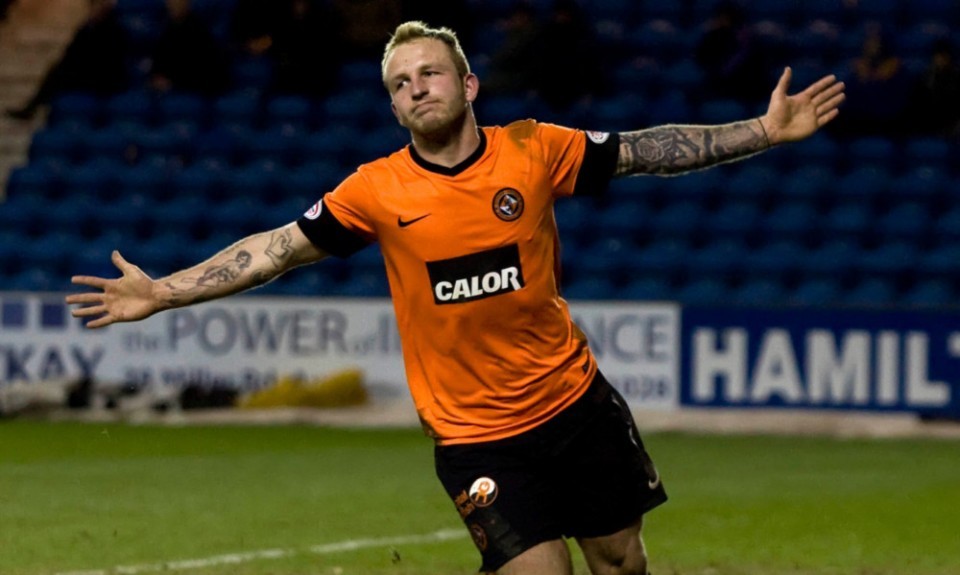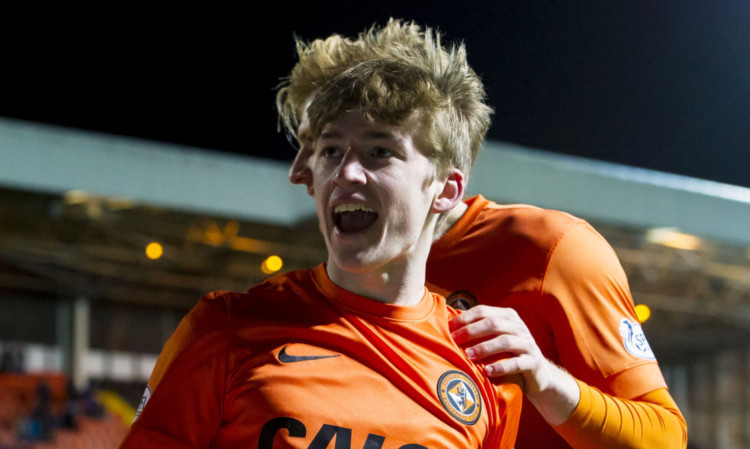The loss of another rising star in Harry Souttar if, as looks likely, he completes a move to Stoke City, will represent the sixth time in just five years a product of the famed Dundee United youth policy has been sold to a bigger club.
Since David Goodwillie netted the Tangerines £2.2 million from Blackburn Rovers in August 2011, Johnny Russell, Ryan Gauld, Stuart Armstrong and John Souttar have been lured away.
Only one, Armstrong, made in excess of 100 competitive starts for the Tangerines before packing their bags and going.
Harry Souttar’s departure is an exceptional example of that. He’s made just two starts and scored in his only other top-team outing, coming on as a sub late in the final-day victory at Kilmarnock last season.

Of the rest, Russell made 98 starts before heading for Derby County in 2013 season, Goodwillie 85 up to his ill-fated switch to Lancashire, the older Souttar brother was on 66 starts when he switched to Hearts in January and Gauld was only seen from kick off on 32 occasions.
For traditionalists, that begs the question was all the money and effort to develop their talent worth it?
Because, as good a job as most of them did for United, it’s a statement of the obvious to say by time of departure none had achieved anything approaching their full potential.
Given the present position in the Championship, it can also be asked would that money spent on getting them through the youth ranks have been better used to sign established first-team players from other clubs?
That’s not having a pop at United. It’s a question that’s raised in the boardrooms of provincial clubs throughout Scotland and beyond.
If the sight of young talent moving on to play the best football of their careers elsewhere is frustrating for supporters, from a business perspective investment in a strong youth set-up is the way to go.
United and Stoke have not disclosed what the fee for Harry Souttar will be but it seems somewhere in excess of £250,000 guaranteed with much more to follow by the way of add-ons if he does well.

And another big chunk of cash could come the club’s way if he makes a big-money move from the Potteries in the next two or three years.
Of course, there is no guarantee he will be a success in England, so that income may never materialise.
That only strengthens the argument clubs like United should take the first decent offer rather than wait and hope fulfilled potential leads to more first-team games and a bigger transfer fee at a later date.
The cash up front for Souttar will mean United are raking in over £6m from these recent deals.
The vast majority came from the sales of Goodwillie and Gauld, both of whom have struggled since moving.
Goodwillie’s career has crashed and this summer saw him sign for Plymouth Argyle after being discarded by Aberdeen at the end of last term.
High hopes remain for Gauld. At 20 and with his talent there is no question he has time to get back on track but since the move to Sporting Lisbon his career has stalled.
If he fails to get things moving again, the decision to sell would be vindicated. None of that makes things any easier for Arabs, particularly given the present struggles.
Perhaps more than any other set of supporters, though, the last five years have opened their eyes to economic reality of the modern game.
